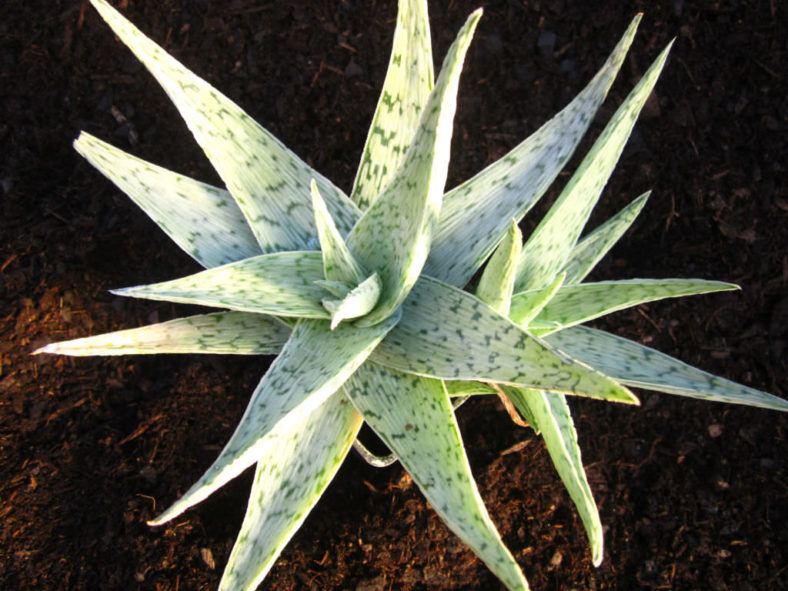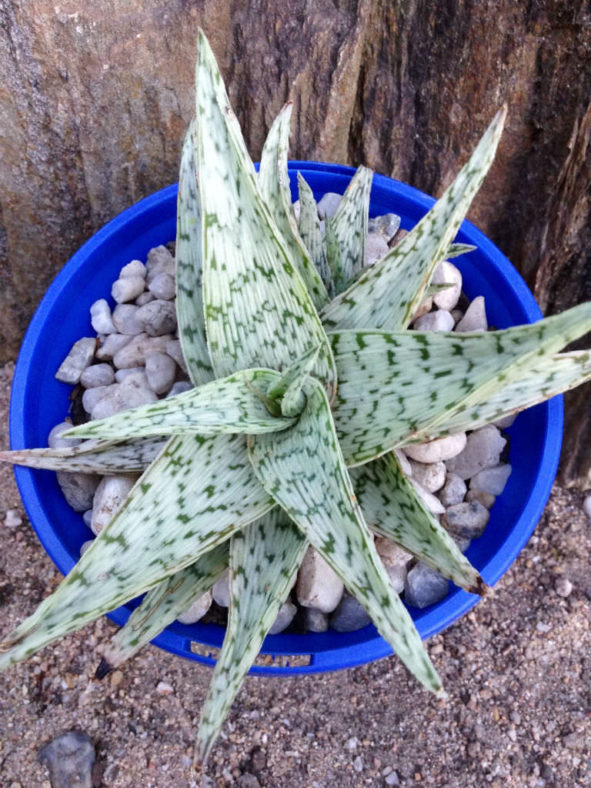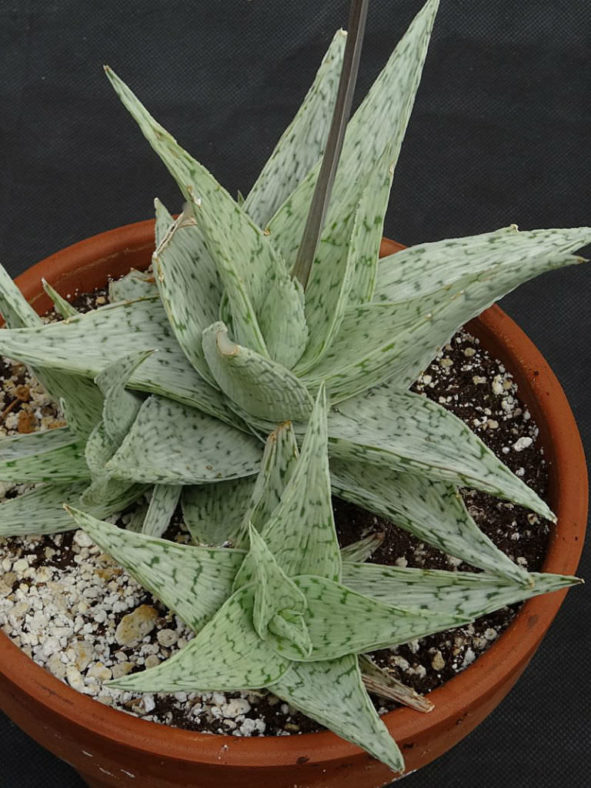Scientific Name
Aloe 'Quicksilver'
Scientific Classification
Family: Asphodelaceae
Subfamily: Asphodeloideae
Genus: Aloe
Origin
Aloe 'Quicksilver' is a hybrid created by John Bleck. Its complex parentage includes Aloe descoingsii, Aloe calcairophylla, Aloe bellatula, and Aloe rauhii.
Description
Aloe 'Quicksilver' is a small succulent that forms rosettes of thick, fleshy leaves with a striking silvery appearance. The leaves are green with bands of silvery-white markings that almost cover the entire surface. They are triangular and can grow up to 4 inches (10 cm) long.
The flowers are orange-red and appear on long, usually unbranched spikes in late spring.

How to Grow and Care for Aloe 'Quicksilver'
Light: When growing A. 'Quicksilver' indoors, place your plant in a window with plenty of bright indirect light. Rotate the pot once or twice a week so that all sides of the plant receive equal lighting. Outdoors provide light shade, especially during the hottest parts of the day.
Soil: Plant A. 'Quicksilver' in a well-drained soil mix formulated for succulents or make your own. Drainage is essential because too much moisture around roots can cause root rot.
Hardiness: When temperatures shift below 50 °F (10 °C), it is time to bring your plant back inside. A. 'Quicksilver' can withstand temperatures as low as 25 to 50 °F (-3.9 to 10 °C), USDA hardiness zones 9b to 11b.
Watering: This succulent needs regular watering but is very tolerant of short periods of drought. Water deeply, but only when the soil is dry. Cut back on watering during the winter months. Do not let water stand in the rosettes.
Fertilizing: A. 'Quicksilver generally does not require fertilizer but may benefit from the extra nutrients. Following the label directions, feed succulents with fertilizer in spring and summer.
Repotting: This plant is not particularly fast-growing and will only rarely need repotting. To prevent rootbound, repot it in the spring in a container a few inches larger in diameter every few years.
Propagation: A. 'Quicksilver' can be propagated by offsets, cuttings, or seeds. Remove offsets from the mother plant or take cuttings with a sharp knife in late spring or early summer. For best results, sow seeds during the warm months.
Learn more at How to Grow and Care for Aloe.
Toxicity of Aloe 'Quicksilver'
A. 'Quicksilver' is not listed as toxic for people and pets.
Links
- Back to genus Aloe
- Succupedia: Browse succulents by Scientific Name, Common Name, Genus, Family, USDA Hardiness Zone, Origin, or cacti by Genus
Photo Gallery
Click on a photo to see a larger version.

